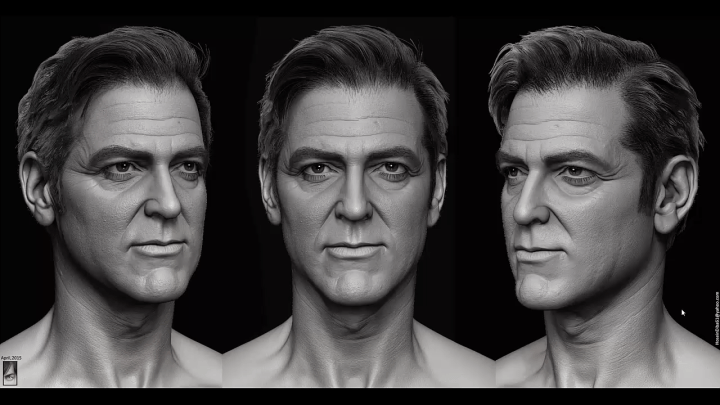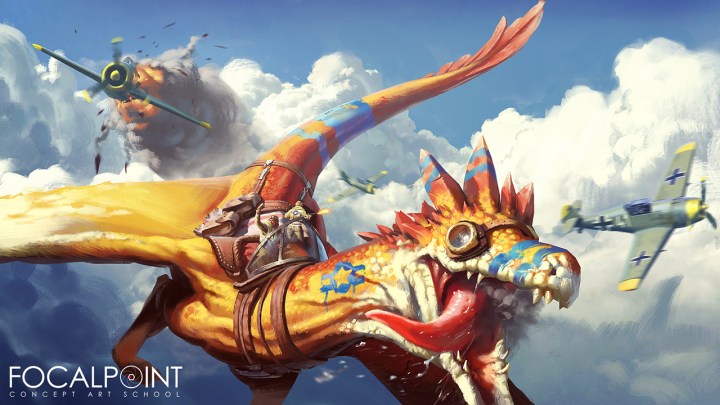How to Turn Your Art Into Licensed 3D Printed Products
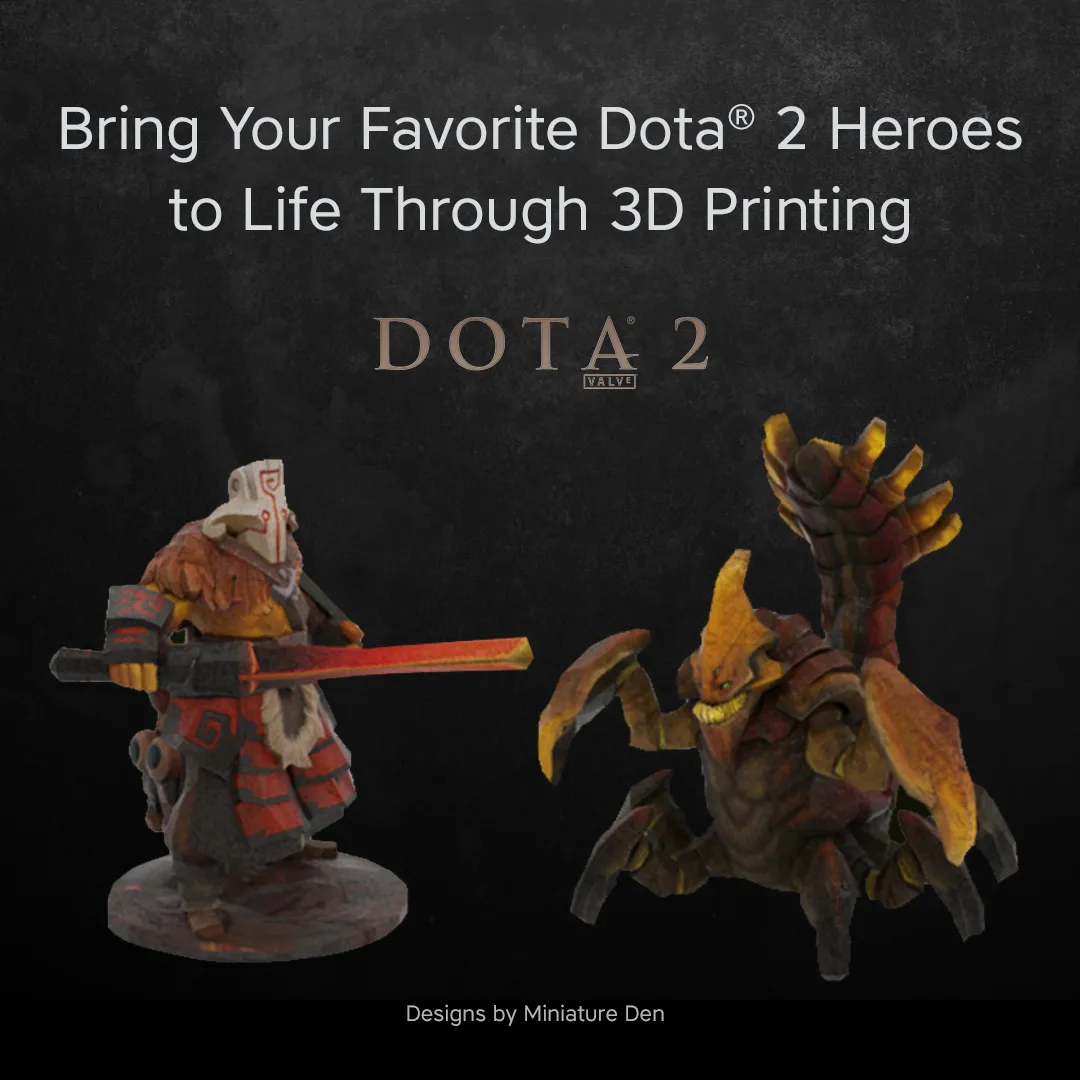 Seeing some of the incredible video game-inspired artwork in the ArtStation world, Shapeways is excited to announce that they’ve developed a way for artists to monetize those creations! Last month, Valve and Shapeways introduced an independent artist-friendly licensing partnership which allows anyone to make, sell, and advertise their own licensed, 3D printed art and merch for any of the iconic Valve game franchises.
Seeing some of the incredible video game-inspired artwork in the ArtStation world, Shapeways is excited to announce that they’ve developed a way for artists to monetize those creations! Last month, Valve and Shapeways introduced an independent artist-friendly licensing partnership which allows anyone to make, sell, and advertise their own licensed, 3D printed art and merch for any of the iconic Valve game franchises.
Valve’s franchises are legendary: games like Half-Life 2 and Portal are classic masterpieces, while DOTA 2 and Counter-Strike: Global Offensive continue to be major staples in the competitive eSports scene. Not only do committed players keep the franchises vital, they also show their passion for the games through stunning art, game assets, and, now, 3D printed objects.
To start selling your Valve-inspired creations, open a Shapeways shop (which is both fast and free), upload a 3D model, tag it with Valve-y terms, and set your markup. You’ll be automatically prompted to opt in to the license. A 10% royalty will then be automatically deducted from your markup on anything you sell. You can offer your designs in 60+ materials, including nylon plastic, full color sandstone, bronze, or whatever best captures your vision. You’re also allowed to freely promote your work anywhere you want — including in Steam Community hubs, at gaming conventions and on your own site – the opportunities are endless.
Because many ArtStation designers have created Valve-inspired art, follow the steps below to turn those virtual files into models that can be 3D printed.
Converting 3D Assets for Video Games into 3D Printable Design Files
This tutorial is designed to help you assess 3D video game models and adjust aspects of them to make them successfully printable in the various materials Shapeways offers. It may seem obvious to state but: things you can make in software cannot always be seamlessly translated into physical objects. Design assets you’ll find in computer animations and video games don’t have usually take the laws of physics and gravity into account.
We’ll be using Autodesk Meshmixer for some quick edits and we’ll take advantage of Shapeways 3D Tools to help finalize any improvements before sending the model to print successfully. And if you get totally stuck you can always visit our Shapeways forums and get advice and tips from our 3D printing community.
Open Meshmixer and choose File > Import to import the design file. Here, we’re using Divine Rapier, a sword from DOTA. From the tool set on the left we’ll choose Edit > Make Solid. Depending on how quickly your computer works opening this tool will require a little bit of wait time.
Once the Make Solid menu options load it will be somewhat obvious that the initial settings for Make Solid will probably appear a rough compared to our initial import. The trick is to test all of the adjustment sliders within the menu option. For example simply sliding the Solid Accuracy slider to the right and clicking Update will improve the model for 3D printing.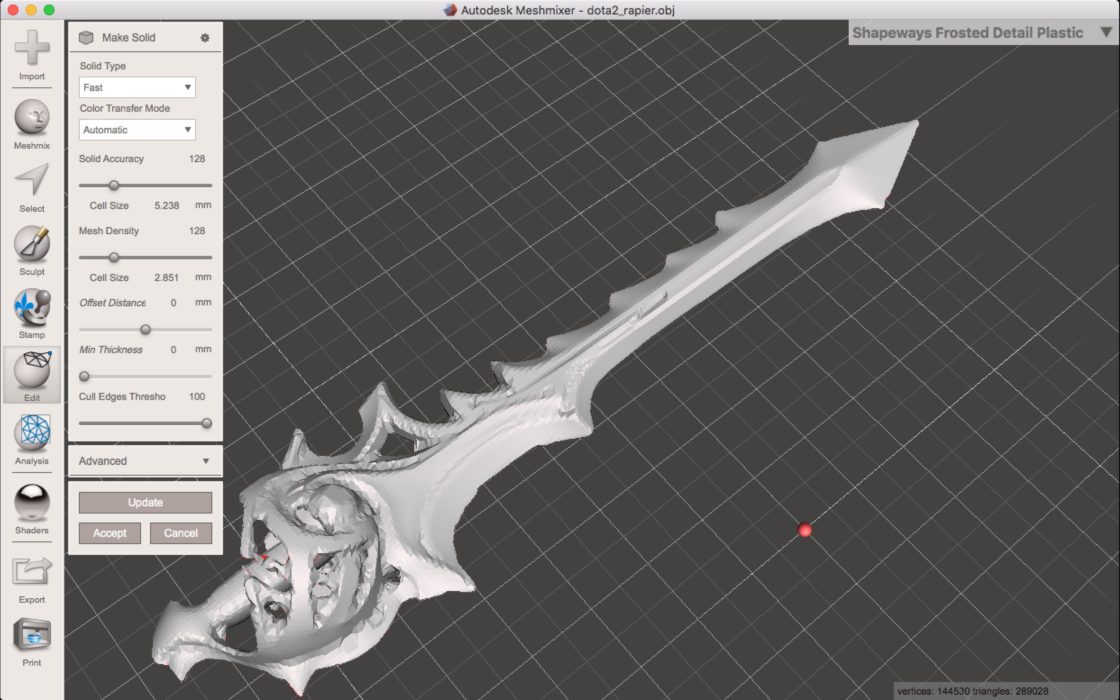
Use the Mesh Density slider to to increase the fidelity of the newly solid model to more closely resemble the original imported version.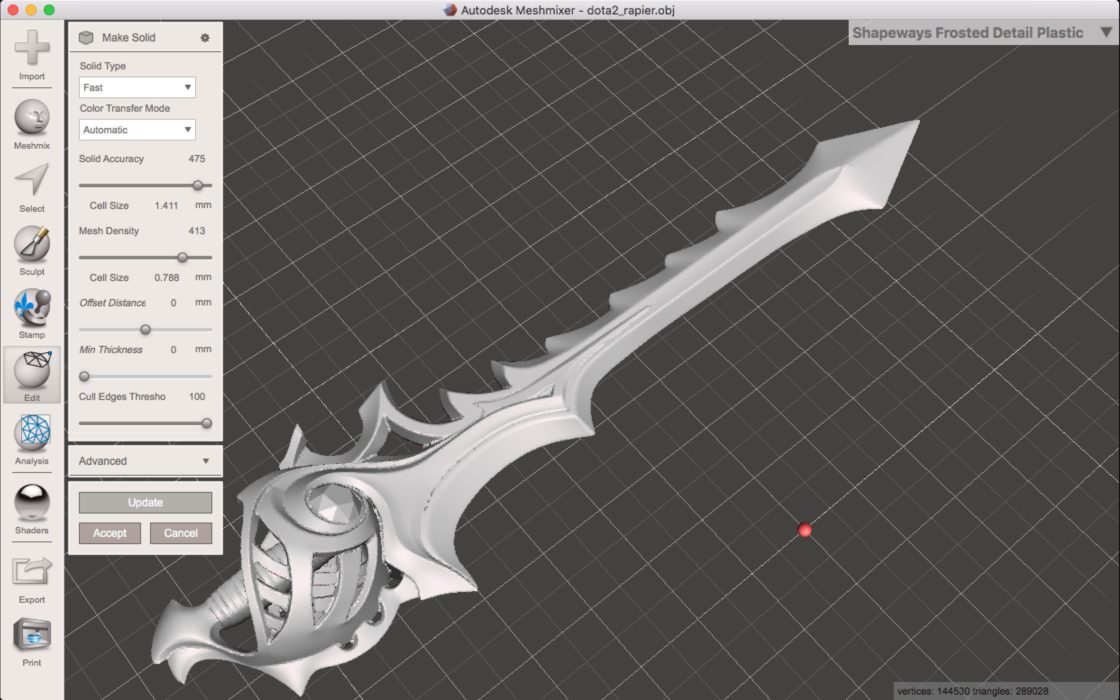
Once these adjustments are aesthetically pleasing you can simply choose File > Export and choose a name and set the file format to STL. Then you can upload to Shapeways and use Valve tags begin selling your creations. Once uploaded, 3D Tools will alert you to any printability issues. Here is a quick tour of how to use 3D Tools make your design printable once uploaded.
This tutorial is the quick and dirty version of prepping a model for printing. Should you need further help navigating printability errors, Shapeways has created a collection of tutorials that hopefully address the majority of issues you’ll potentially encounter.
Video Game Asset Preparation Tutorial Collection
Basics
Video how-to: converting 3D computer graphics to printable files
Fixing Errors
If your model is too detailed to successfully upload:


















